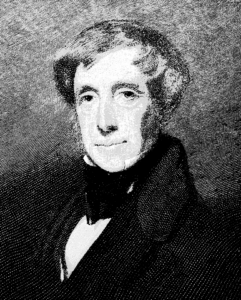
When was Santa born? It is anyone’s guess, but the day 200 years ago when “A Visit from St Nicholas” was published, is as good as any. The 56-line poem first saw print on December 23rd 1823 and has helped shape one of the most important modern Christmas tropes ever since.
It spurred the transformation of the winter festival from a raucous or a religious event into a family-oriented holiday centred around gift-giving to children.
“A Visit from St Nicholas” quickly gained popularity and spread through the American press, and was widely reprinted in Ireland and Europe from the 1850s on.
Moore was likely inspired by a body of children’s literature pub listed in New York over the previous decade. In 1810 John Pintard referred to Saint Nicholas as ‘Sancta Claus’ when he included a Dutch Sinterklaas poem with an English translation in a pamphlet calling for making Saint Nicholas to be made the patron Saint of New York, with illustrations of Alexander Anderson. Two years later, Washington Irving, a friend of Moore’s, inserted a dream sequence featuring St. Nicholas soaring over treetops in a flying wagon in his 1812 A History of New York. Another anonymous children’s poem introduced Santa’s sleigh in 1821, being pulled by a single reindeer.
Moore’s poem completed the cycle and introduced details such as the names of Santa’s reindeer, Dasher, Dancer, Prancer, Vixen, Comet, Cupid, Dunder and Blixem, and the idea of Santa coming on Christmas Eve rather than the saint’s feast day on December 6.
Rudolph came later, thanks to Robert L. May’s 1939 and, more importantly, Gene Autry’s 1949 Christmas song.
Non-threatening
The poem presents a non-threatening and gift-giving version of Santa Claus, removing religious associations and promoting a more appealing and inclusive Christmas celebration.
Moore’s poem inspired the tradition of hanging stockings which spread worldwide.
“A Visit from St Nicholas” by Moore presents a more sophisticated portrayal of Santa Claus and Christmas traditions than might be expected from its brevity, all of 56 lines.
Moore’s Santa Claus is depicted as a working man, with a “miniature sleigh” and “tiny” reindeer, rather than an austere bishop, a green-clad winter king. The colours came later, but the department story Santa of today was inspired by Moore.
Recently, the mayor of New York City declared December 23rd “’Twas the Night Before Christmas Day”. The first lady has put early editions of the poem at the White House.
Accidental fame
The fame of “A Visit from St Nicholas” and its association with Troy, New York, where it was first published in Troy, happened by accident. Moore had originally intended the poem for his children only, but a family friend sent it to the Sentinel newspaper without his permission.
The poem was initially published anonymously, but its author, Clement Clarke Moore, revealed himself 21 years later in a collection of poems. Moore was not from Troy, but a wealthy and learned resident of Manhattan, son of a University professor and engaged in translating a Hebrew version of the bible. He was also, somewhat embarrassingly, a slave owner.
There has been a dispute over the poem’s authorship, with some claiming it was written by Henry Livingston junior, but most scholars disagree and attribute it to Moore.
In Clement Clarke Moore’s time, Christmas was not either celebrated as widely or perceived as fondly.
True to its pre-Christian tradition from festivals, such as Saturnalia, which influenced the timing and customs of Christmas, Christmas carried a party-like atmosphere that occasionally suffered from being over-served, with legacy rituals where the poor demanded food and drink from the wealthy, sometimes in a boisterous and malevolent fashion.
Moore’s poem, “A Visit from St Nicholas,” helped shift the focus of Christmas festivities from the street and pub to the home, transform Christmas into a more peaceful and domestic holiday and played a significant role in reshaping the celebration in the 19th century.
It was not the only factor in bringing this about, but Christmas has been in the sitting room by the family fireplace ever since.








